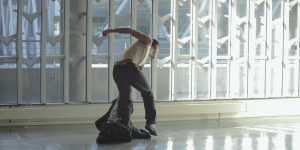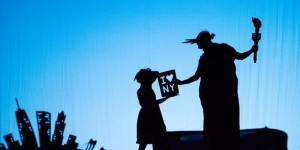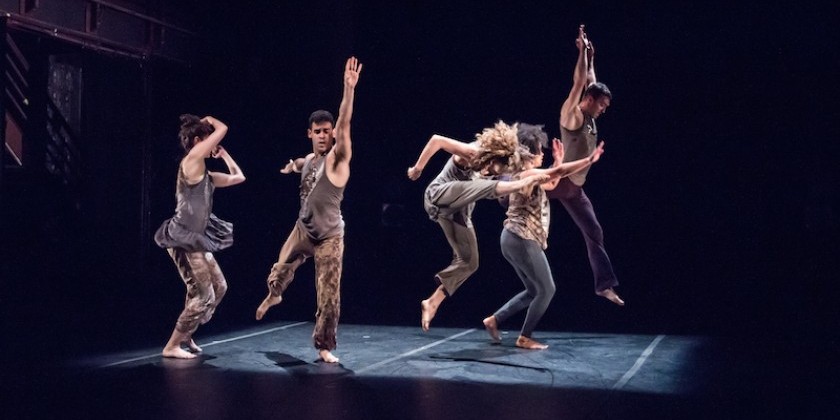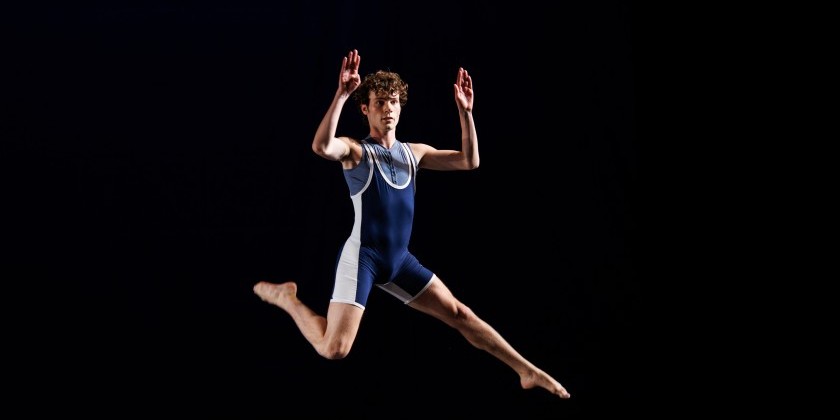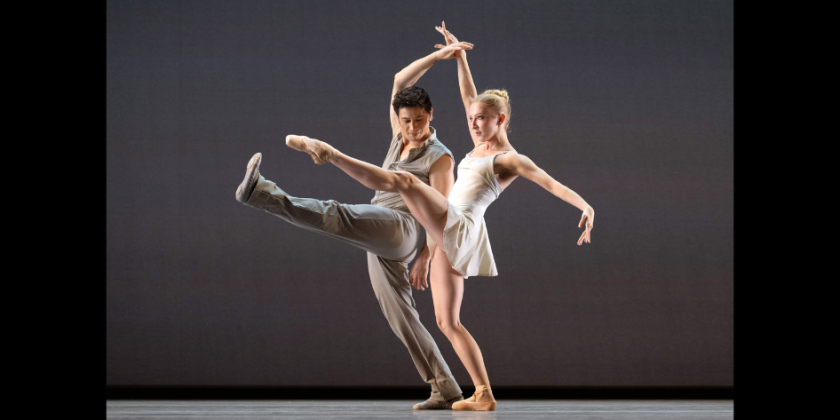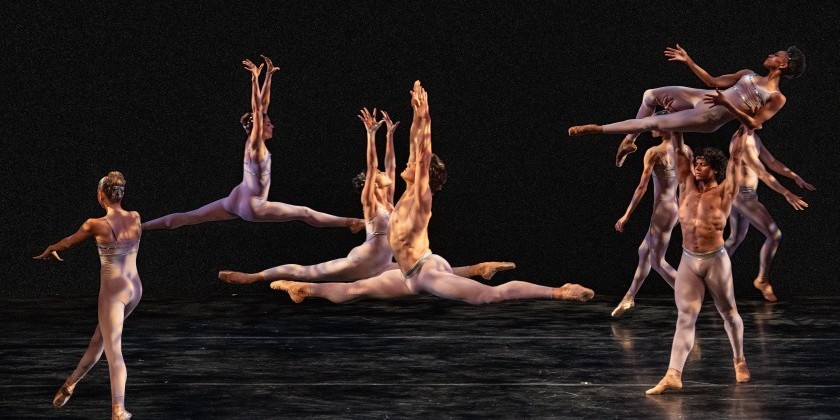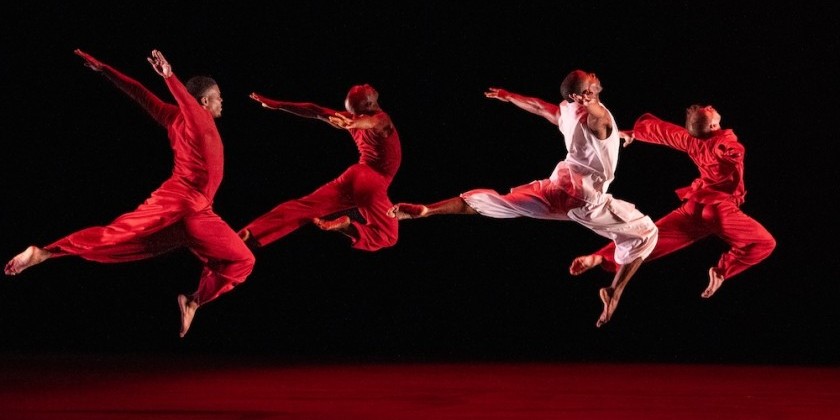IMPRESSIONS: Kari Hoaas Productions in "Shadowland" at the LA MAMA MOVES! Festival
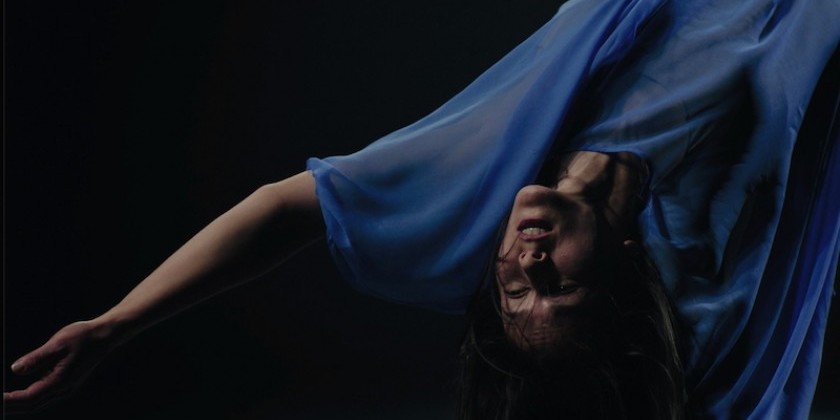
Choreographer: Kari Hoaas
Dancers: Ida Haugen, Christine Kjellberg, Matias Rønningen, and Kari Hoaas
Light and Stage Design & Touring Technician: Gard Gitlestad
Composer and Musician: Fil Uno
Sound Designer: Erling Bergby
Costume Designer: Zofia Jakubiec
New York Producer: Brendan McCall
A vine-like sculpture, presumably made of metal, hangs left of center stage in the otherwise bare space at La MaMa’s Ellen Stewart Theatre. The dark and elegant draping artwork creates an otherworldly environment.
Programming director Nicky Paraiso chimes a bell and welcomes the audience to this 18th edition of the LA MAMA MOVES! festival. He shares that the process of presenting Norwegian choreographer, Kari Hoaas, and her world premiere Shadowland took five years since a certain pandemic got in the way. Hoaas, who spent a good dozen years as a dancer in New York through the ‘90’s and the early years of this millennium, has become a fixture in her native country.
The work begins with a single dancer facing upstage. Her back and arms attract and focus one’s eyes. Tree-like shapes morph from one to the next, in the otherwise barren landscape. Lights fade out and in again, and reveal three dancers on the floor. One man sits alone. Two women rest on one another. The anonymity of the grounded bodies placed in space lets one take in an atmosphere of anticipation. Is this the beginning of time? The two female dancers keep resting. Only the single dancer makes his way slowly downstage all the while never revealing his front. After he completes his journey, the other two dancers engage in a primal floor duet. They never rise to a standing position. As the man joins their movement, I hope for evolution.
Another light change presents a new constellation of bodies and through a long learning process, the dancers place their feet under themselves and eventually rise to an upright position. If this passage does not read as interesting on the page, it somehow manages to be captivating on stage. The earnest commitment to simplicity molds each movement as if it were truly necessary.
The back curtain closes and the vine sculpture lights up. The music becomes percussive. We move from one eon to the next. The movement takes on a different quality. While no one seems comfortable standing yet, the dancers use momentum to propel their bodies along the floor in circular paths and around the space in a fluid manner. All of the performers happen to have long hair and the flow of it extends the rounded, luscious character of motion without ever using this natural tool as a gimmick. For a brief moment two dancers move in unison. The moment resonates as if it were the beginning of civilization.
The full sounds of a cello bring melody and the dancers syncopate their now upright fluid locomotion with arrests. While any contact between the dancers beforehand was purely physical and interdependent by supporting the other’s weight, now the dancers notice and acknowledge one another’s presence. A glance or two toward the audience creates a more welcoming environment. Each dancer explores the space in individual solos and shares their own interpretation of weighted and fluid grace while overlapping with the others. Ida Haugen, Christine Kjellberg, and Matias Rønningen move with commitment, but stop short of virtuosity. Each one has a body part always connected to the ground. The element of air remains alien territory, yet the dancers discover how to spin. Thankfully each dancer makes their own attempt at spinning so the exploratory sense of the mission is kept intact. I question the costume addition at this point when all performers don white skirts with black lines painted on them. While the skirts help illustrate the spinning, the fabric is not full enough to give a satisfying payoff.
The performers assume sitting positions, and eventually disperse. Slowly the sculpture begins to rotate. Because the vine glimmers on only one side while it functions as a makeshift yet imposing searchlight, the rest of the space is left in shadow. One rotation reveals a figure in the back and on its next orbit another. Then the light dims and the rotation of this shadow world ends.
Shadowland, inspired by the late artist Jan Groth, is a mature work that requires patience. Gard Gitlestad, responsible for light and stage design, completes Hoaas’ resolute choreographic vision.




